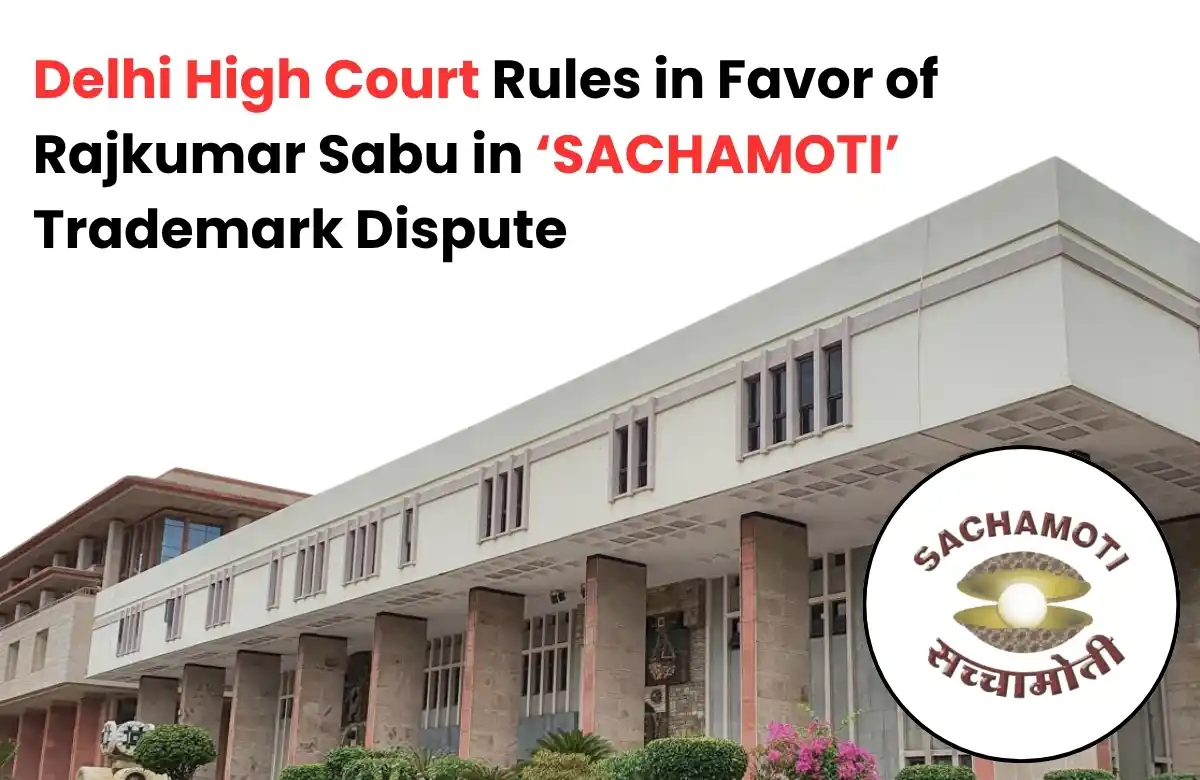
The Delhi High Court recently delivered one of its landmark judgments in a case that perfectly illustrates how even a single word can hold immense commercial value in today’s competitive market. SACHAMOTI trademark dispute. The case highlights how companies are increasingly vigilant about protecting their intellectual property rights (IPR) and the goodwill associated with their brands. The dispute between Sabu Trade Private Limited and Rajkumar Sabu revolves around the use of the popular “SACHAMOTI” trademark — a name long associated with sabudana (sago) products in India. This legal battle shows how brand identity has become a powerful business asset, one that companies are determined to defend. To understand the full story behind this case and the Delhi High Court’s ruling, keep reading.
What Is the Background of the SACHAMOTI Trademark Dispute Between Sabu Trade Pvt. Ltd. and Rajkumar Sabu?
To understand this case better, it’s important to know how it all began and where it came from. The SACHAMOTI trademark dispute traces back to the Sabu family’s long-standing business, which has been involved in the manufacture and sale of sabudana (sago) products for many years. The brand SACHAMOTI became well-known in the market and was closely associated with the family’s business legacy.
Things took a turn in the early 2000s, when Rajkumar Sabu, one of the family members, registered the SACHAMOTI trademark under his own name and began operating under the brand independently. This move didn’t sit well with other members of the family, especially Sabu Trade Private Limited, who claimed that the mark originally belonged to the joint family business. They argued that Rajkumar Sabu’s registration of the trademark was unauthorized and invalid.
As tensions grew, Sabu Trade Private Limited decided to take legal action and filed a case against Rajkumar Sabu. In response, Rajkumar Sabu fought back in court, defending his trademark ownership and trying to protect his rights over the SACHAMOTI brand.
Read Also: CIPO Grants Patent to Palisade Bio for Its Innovative Ileocolonic Drug Technology
What Was the Delhi High Court’s Final Decision in the SACHAMOTI Trademark Case?
The SACHAMOTI trademark dispute witnessed several rounds of proceedings over the years, making it one of the longest-running legal disputes involving a family-owned brand. Recently, the Delhi High Court delivered its final verdict in favor of Rajkumar Sabu, dismissing the appeal filed by Sabu Trade. The Court upheld the earlier order of the Single Judge, confirming that the “SACHAMOTI” trademark and its label are validly registered in the name of Rajkumar Sabu and that he holds the lawful rights to use and protect the mark.
In its detailed judgment, the Court provided multiple reasons for reaching this decision, such as:
- It found that STPL failed to produce concrete documentation or evidence to support its claim of prior use or ownership of the “SACHAMOTI” mark.
- The Bench also noted that appellate courts should not interfere with interim orders unless they are found to be perverse, arbitrary, or legally flawed, and no such error existed in the Single Judge’s order.
- The Court observed that while the dispute largely stemmed from family disagreements, such internal conflicts cannot override statutory rights derived from valid trademark registration.
- It further recognized that Rajkumar Sabu had consistently used the “SACHAMOTI” mark and label in trade, reinforcing his claim to ownership.
- Additionally, Rajkumar Sabu also holds copyright registration for the “SACHAMOTI” label design, providing him with further legal protection.
Read Also: Understanding the Importance of Patent Filing in Driving Innovation and Business Growth
Conclusion
The Delhi High Court’s judgment in the SACHAMOTI trademark dispute stands as a clear example of how strongly the Indian judiciary upholds intellectual property rights and the importance of valid trademark registration. By ruling in favor of Rajkumar Sabu and dismissing the appeal filed by Sabu Trade Private Limited, the Court reaffirmed that ownership supported by registration and consistent use carries greater legal weight than unsubstantiated claims or internal family disagreements.
